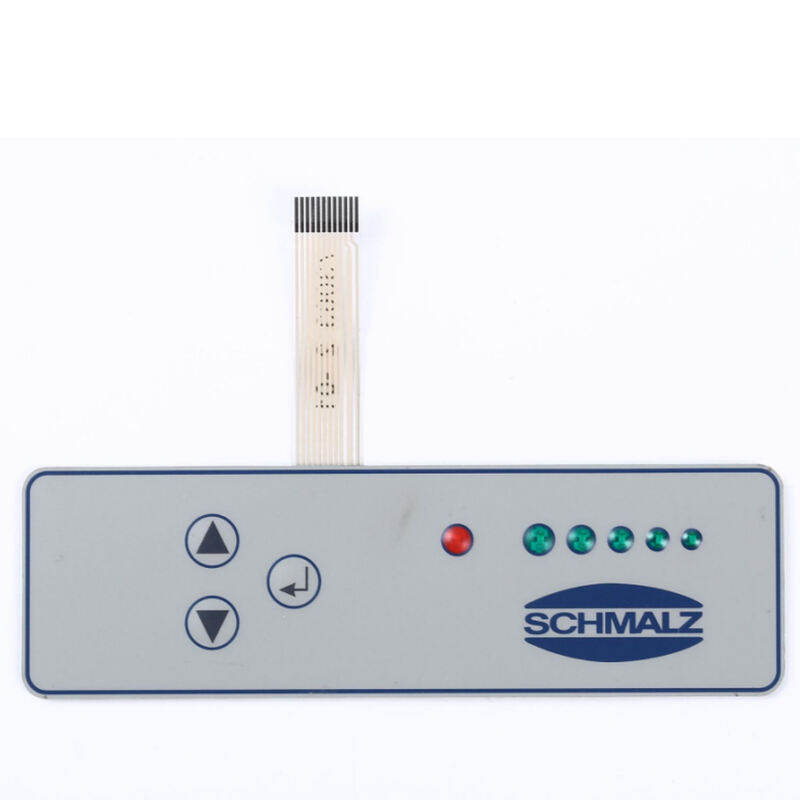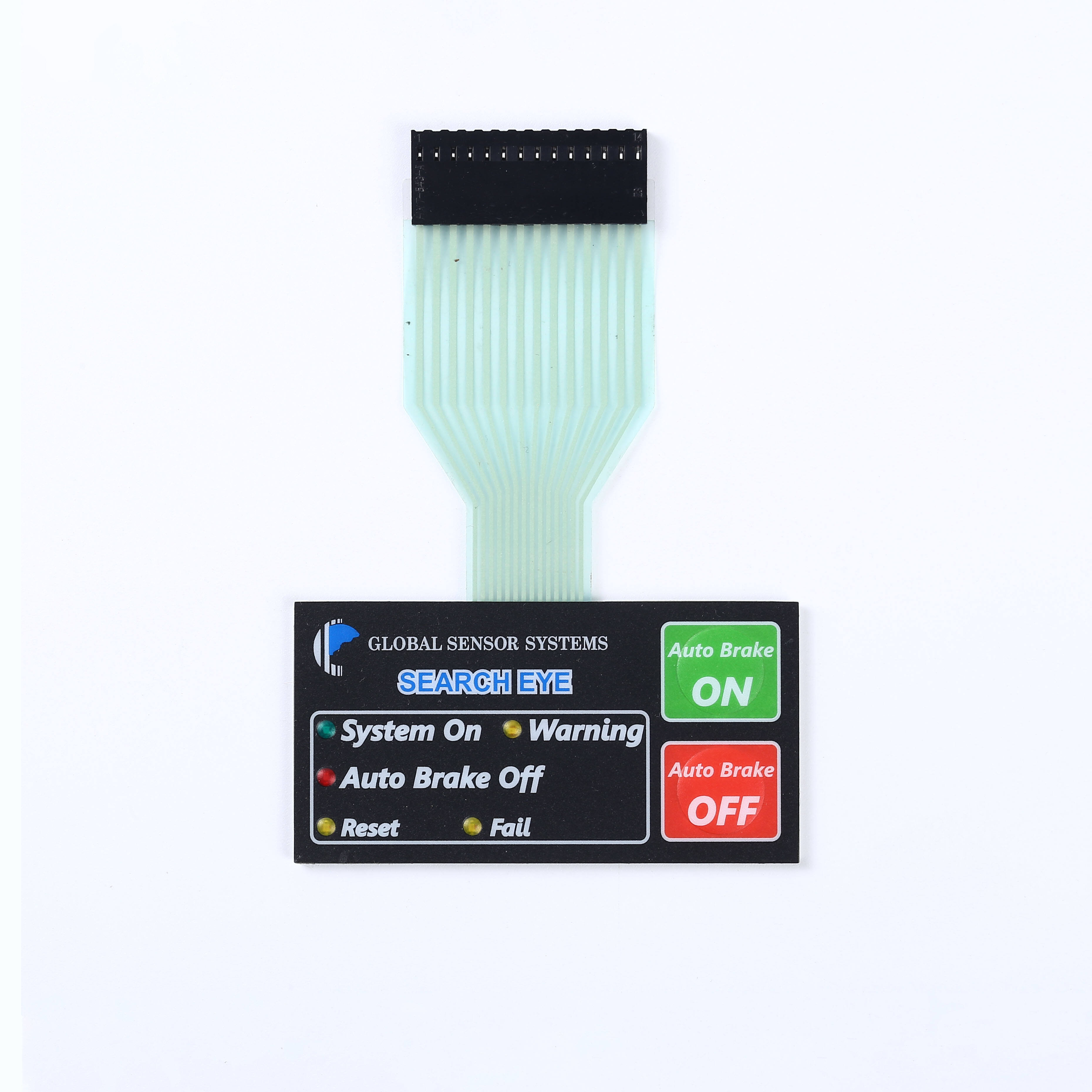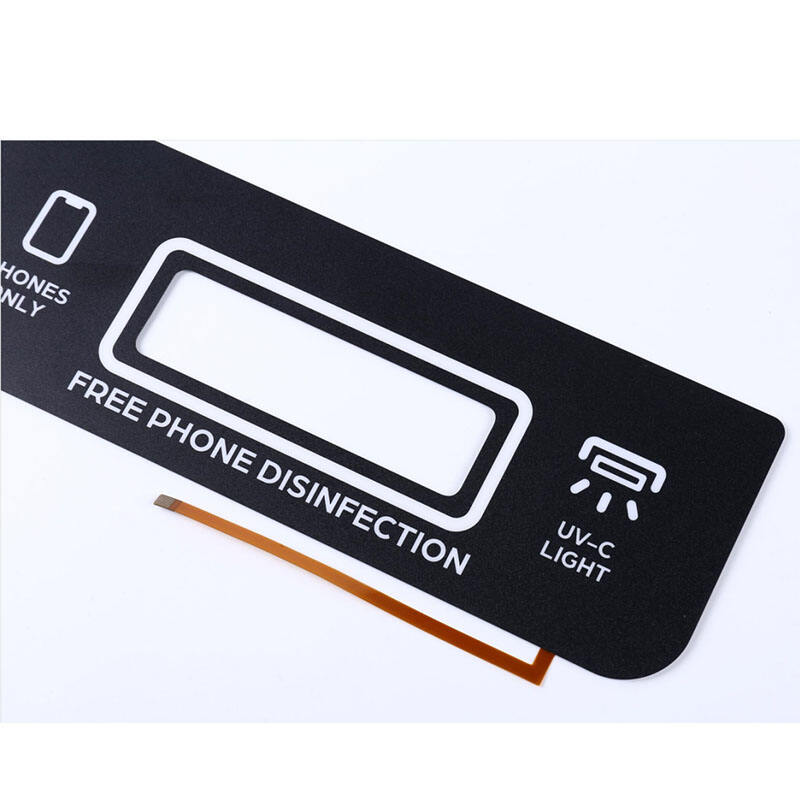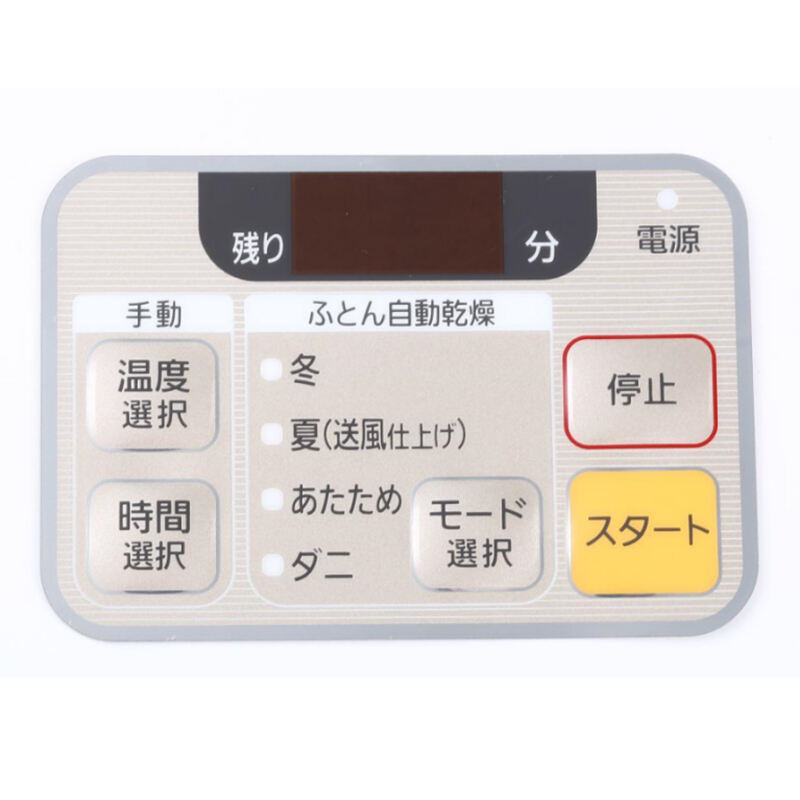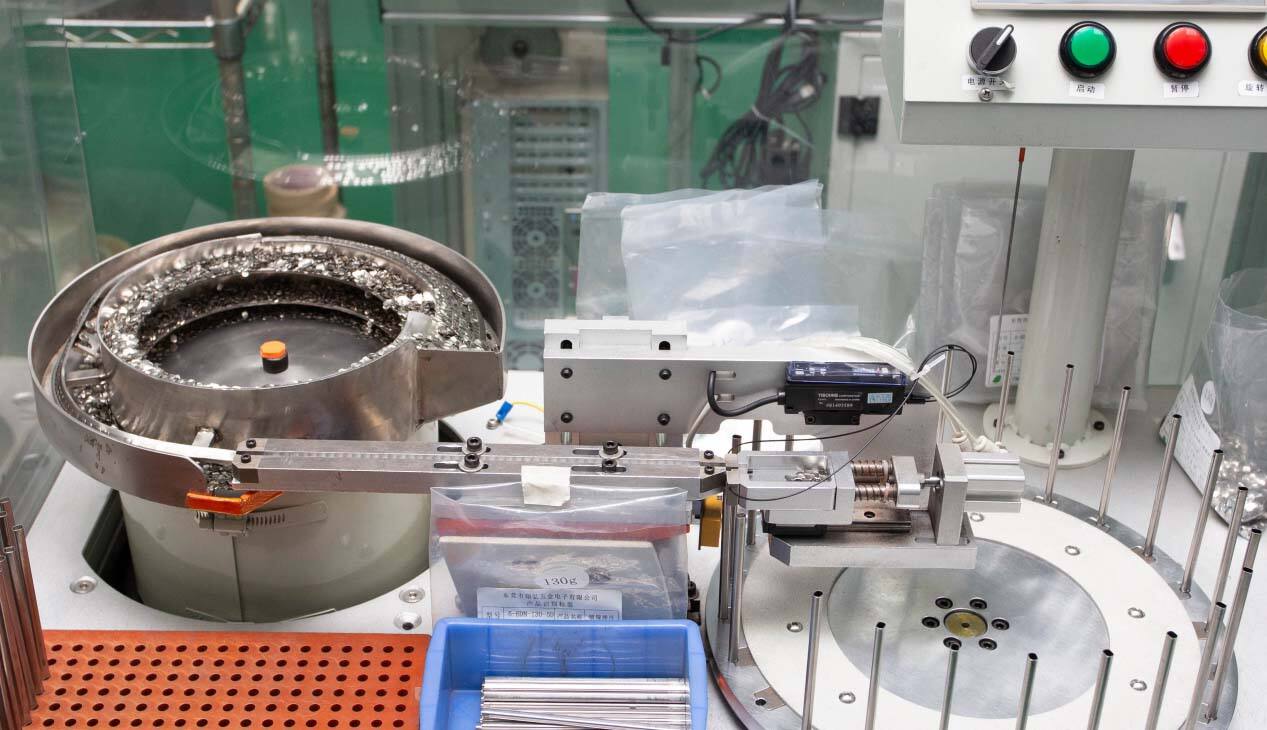Are you aware of the various backlight options available for membrane switches?
Fundamentals of Membrane Switch Backlighting
Role of Illumination in User Interface Design
Illumination plays a crucial role in enhancing the usability of membrane switches, especially in low-light environments. Backlighting improves visibility, allowing users to navigate interfaces seamlessly without straining their eyes or making errors in dim settings. By integrating backlighting, the aesthetic appeal and functional clarity of devices significantly increase, enhancing user experiences. The reduced rate of user errors and heightened interaction rates in backlit interfaces are a testament to their effectiveness compared to non-backlit ones. With illumination, every key or button becomes visible and user-friendly, promoting efficiency and ensuring that users can operate devices effortlessly in various lighting conditions.
Key Factors in Backlight Selection
Selecting the appropriate backlighting for membrane switches involves several critical considerations, such as brightness, energy consumption, color uniformity, and longevity. Each of these factors plays a vital role in determining the optimum backlighting solution for specific applications. Additionally, environmental factors, including temperature and humidity, can impact membrane switch performance, necessitating a careful selection process to ensure durability and reliability. Current market trends reveal a growing preference for energy-efficient and long-lasting solutions, as industries continue to seek sustainable options in backlight technology. Evaluating these elements allows for informed decisions, ensuring the chosen backlighting solution adequately meets the demands of particular projects while providing enhanced functionality.
LED Backlighting Technology for Membrane Switches
How LED Illumination Works
LED technology serves as a cornerstone in backlighting for membrane switches due to its efficiency and adaptability. LEDs emit light through electroluminescence, where electron movement through a semiconductor produces photons, resulting in illumination. Various types of LEDs cater to specific needs, such as side-fired LEDs for sleek and low-profile designs. These lights offer significant benefits, including low heat output which minimizes damage to surrounding components and contributes to longer device lifespans. Recent advancements in LED technology further enhance their appeal in user interfaces; innovations have led to brighter outputs with reduced energy consumption, fostering their growing popularity in diverse industrial applications.
Advantages in Industrial Applications
LED backlighting proves particularly advantageous in industrial environments, where conditions can be harsh and demanding. Their resistance to shock and vibration ensures consistent performance, making them an ideal choice for equipment operating under challenging circumstances. Case studies showcase improvements in device durability and user interaction due to LED backlighting. For instance, machinery control panels equipped with LED backlighting experience reduced operator errors and increased productivity. Additionally, LEDs are renowned for their energy efficiency, consuming less power compared to other lighting solutions, and boasting a longer lifespan, which results in reduced maintenance costs and operational savings—a vital factor in industrial applications where cost-effectiveness is paramount.
Limitations to Consider
Despite their numerous advantages, LED backlighting comes with certain limitations that must be taken into account. The initial cost of implementing LED technology can be considerable, especially for products requiring high-intensity lighting. Additionally, performance issues such as flickering can arise, impairing user experience in applications demanding precise feedback. Research insights suggest these issues often stem from voltage fluctuations or inadequate circuit design. Experts highlight a trade-off between cost and performance, advising a careful balance to leverage the benefits of LED illumination while minimizing downsides. This understanding is critical for manufacturers aiming to incorporate LED backlighting effectively into their devices without compromising functionality.
EL Backlighting Systems Explained
Understanding the functionality and benefits of Electroluminescent (EL) backlighting systems can aid in selecting the right technology for your application.
Electroluminescent Principles
Electroluminescent technology is based on the principle of emitting light through an electric field applied to phosphorescent materials. Unlike the point-source lighting of LEDs, EL panels emit a uniform glow across a surface, making them ideal for applications requiring even illumination. EL backlighting typically involves using thin, flexible films of light-emitting phosphor that are sandwiched between conductive layers. These layers are often made from materials like indium tin oxide (ITO) on polyester or polycarbonate substrates. According to a study, EL systems are effective for their energy-efficient, low-voltage operation and high luminosity over large surfaces.
Ideal Use Cases for EL Technology
Electroluminescent technology excels in environments where space is limited, and lightweight components are essential, such as in aerospace and medical devices. Its thin and flexible nature allows for integration into very tight spaces without adding significant bulk. EL backlighting is beneficial in applications requiring continuous, diffuse illumination over surfaces. User satisfaction surveys have noted improvements in device performance due to the uniform light output EL systems provide, making them suitable for ergonomic designs that enhance usability.
Operational Constraints
Despite its benefits, EL backlighting has operational constraints, particularly related to environmental conditions. EL panels are sensitive to moisture and extreme temperature variations, which can degrade their performance. The lower brightness levels compared to LED technology can also limit their usage in areas requiring intense lighting. However, advancements are being made to overcome these constraints; researchers are exploring new materials and technologies to improve EL's brightness and environmental resilience. Nonetheless, it's essential to consider these limitations when selecting EL systems for specific applications.
LED vs EL: Technical Comparison
Brightness and Visibility Analysis
When comparing the brightness levels of LED and EL technologies, it is clear that LEDs tend to outperform EL in terms of sheer luminosity. LEDs are known for their ability to provide high-intensity light, making them more suitable for environments where bright, clear illumination is necessary, such as outdoor signage or dashboard lighting. EL, on the other hand, offers a more uniform and diffused glow, which is ideal for applications where a soft, even light is preferable. Studies have shown that LED technology, due to its inherent brightness, remains visible even under high ambient light conditions, while EL can sometimes struggle in bright environments. According to empirical data, LED backlighting provides superior brightness performance, which makes it particularly effective in challenging visibility scenarios.
Power Efficiency Comparison
Comparing the power consumption of LED and EL backlighting reveals distinct differences that impact their environmental footprint and operational cost. Typically, EL systems consume less power, making them highly efficient for low-energy applications. However, despite consuming slightly more power than ELs, LEDs offer significant advantages in energy efficiency over their lifespan. Industry reports indicate that although the initial power usage of LEDs might appear to be higher, the long-term sustainability and reduced energy bills offer a considerable advantage. Moreover, LEDs are renowned for their ability to sustain performance while minimizing battery drain, crucial for portable electronic devices. As technology advances, both LEDs and ELs are increasingly engineered to maximize sustainability and minimize environmental impact, though LEDs currently lead in overall power efficiency.
Cost and Lifespan Considerations
In terms of cost and lifespan, LED and EL technologies present distinct scenarios for initial investment and long-term value. Typically, LED backlighting systems have a higher initial setup cost due to the expense of LED components and their integration. However, LEDs offer a longer lifespan, often exceeding a decade, far surpassing the operational life of most EL systems. EL backlights, while cheaper at the outset, may incur greater costs over time due to more frequent replacements. Market analysis consistently points to LEDs as a more cost-effective solution in the long run, particularly when considering factors such as durability and maintenance. Furthermore, the return on investment with LED systems is often enhanced, attributable to fewer service intervals and their suitability for high-performance applications that demand robust illumination solutions.
Backlight Solutions for Membrane Switch Applications
Standard LED Membrane Switch
Standard LED membrane switches are quite popular in consumer electronics due to their cost-effectiveness and versatile applications. They feature robust designs that ensure high brightness, energy efficiency, and a long lifespan. Commonly found in devices like TV remotes and microwave ovens, these switches provide clear visibility and easy interface access in various lighting conditions. Industry testimonials often highlight their reliable performance across sectors. For instance, electronics users report improved user experience in low-light environments, enhancing overall functionality.
High-Performance LED Model
High-performance LED models stand out with their superior specifications and are ideal for high-usage environments. Compared to standard models, they offer enhanced brightness and durability, making them suitable for demanding applications like medical equipment and automotive dashboards. When choosing high-performance solutions, industries have noticed increased reliability and efficiency. Case studies from the automotive sector reveal successful applications where vibrant displays have improved dashboard visibility, thus enhancing driver safety and user satisfaction.
Custom EL Backlit Membrane Switch
Crafting custom EL backlit membrane switches involves meeting specific client needs through tailored designs. Industries requiring these custom solutions include aerospace, automotive, and industrial applications, where unique configurations are crucial. Tailored designs offer advantages such as improved visibility and efficient operation in specialized settings. Market trends indicate a growing demand for bespoke EL solutions, as companies seek to incorporate distinctive backlighting into their devices to enhance user experience and operational efficiency.
Universal Membrane Switch Panel
Universal membrane switch panels are known for their versatility and integration capabilities across diverse devices. These panels possess essential features that enable seamless functionality in varied environments, making them suitable for applications in electronics, automotive, and industrial sectors. Successful implementations highlight their adaptability, with user satisfaction metrics revealing high approval for their integration in complex devices. Such versatility ensures these panels are considered top-tier solutions for multi-device operations.
Hot News
-
Membrane Switch Panel Sample Instructions
2023-12-14
-
Do You Know the Reasons Why Hot Pot Slices Cannot Pop Up When Pressed?
2023-12-14
-
What is a Light Guide? Hongmao Specializes in the Production of Light Guide Sheets, Did You Know?
2023-12-14
-
How Many Rulers Are Needed To Make A Membrane Switch?
2023-12-14

 EN
EN
 AR
AR
 FR
FR
 DE
DE
 IT
IT
 JA
JA
 KO
KO
 PT
PT
 RU
RU
 ES
ES
 VI
VI

